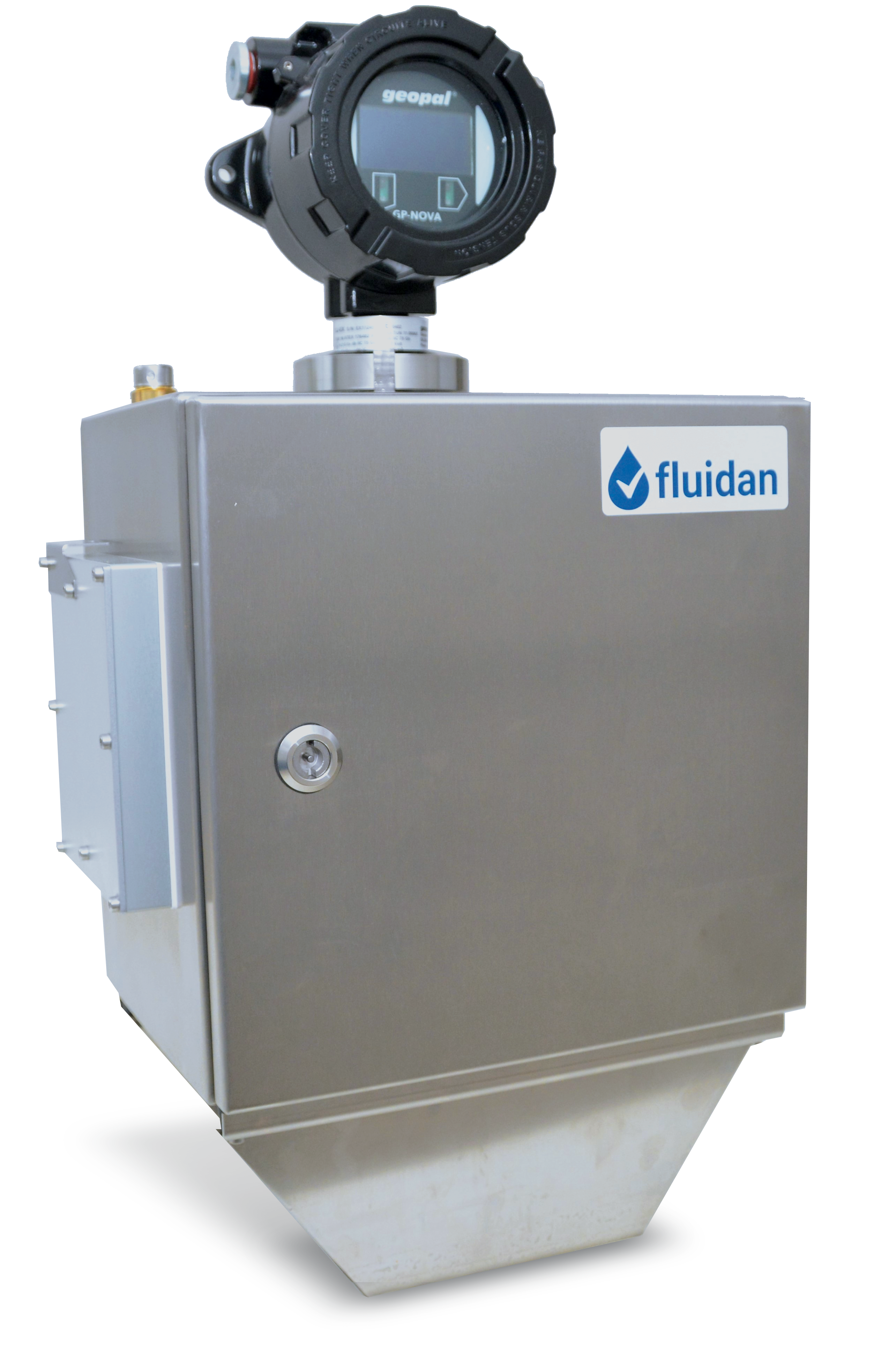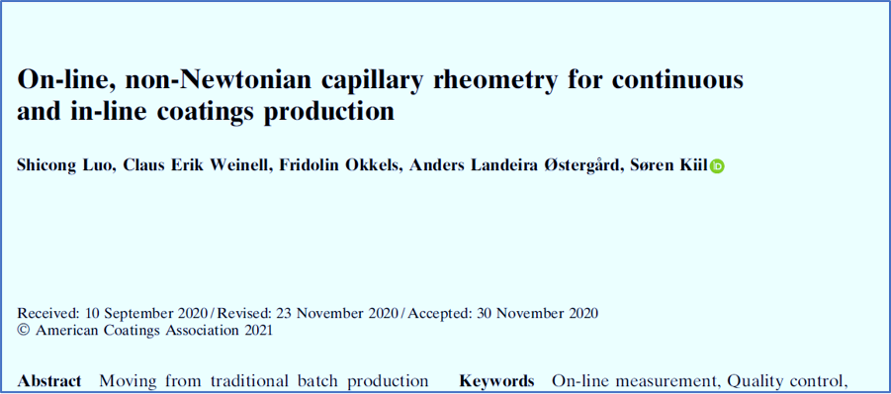The competitive challenges in the paints and coatings industry calls for more effective, fail-proof, and automated production methods.
Controlling coatings rheology is highly manual and time consuming today, and therefore the CoaST research center decided to test RheoStream®.
A paper was published in the Journal of Coatings Technology and Research (JCTR).
CoaST
CoaST is the daily name for The Hempel Foundation Coatings Science and Technology Centre.
CoaST is a strong research center integrated in the Department of Chemical Engineering at the Technical University of Denmark, DTU, north of Copenhagen.
The center covers coating technologies from raw materials, over formulation, test and characterization to production and application. CoaST will support development, production and use of coatings with improved sustainability profiles over the lifetime of the coating. The homepage of CoaST is here.

In-line Production Calls for in-Process Analytics
Researchers at CoaST take the big perspective: Can paint manufacturing become much more resource and cost effective by moving towards in-line semi-continuous or truly continuous manufacturing processes?
For this to happen, an obvious obstacle is the limited options for on-line quality control instruments.
Current manual quality control (QC) methods, while simple and reliable for repeated use, require human interaction and time for thermostating and are therefore not suitable for true in-line coatings production.
Other attempts of measuring viscosity in the process have proven inadequate for a variety of reasons – they may not be suitable for non-Newtonian liquids, or they may get in the way of tank or pipe cleaning systems.
RheoStream® – Demonstrated to be a Varied and Robust Technique for Coatings Rheology Online
At CoaST, RheoStream was tested with a range of acrylic paints and the viscosity measurements were compared to a very commonly applied QC-method, the Stormer Viscometer. Data were also compared to measurement using an advanced laboratory rheometer.
RheoStream is a fully automated capillary rheometer – for a more basic understanding of how different rheometers work, check this page: fluidan.com/different-types-of-rheometers/
CoaST finds that RheoStream provides very reliable viscosity measurements with an excellent agreement to the reference data. The study also finds that the resolution of the RheoStream data was sufficiently high to detect minor viscosity changes resulting from fluctuations in raw material composition. However, for the most thixotropic paints, the viscosity measured at low shear rates is somewhat underestimated by RheoStream. The work continued by optimizing the RheoStream measurement cycle as a waiting period prior to measurement was introduced. This allows the agitated thixotropic paint to relax and clearly improves the correlation.
The study concludes that compared to the analytical methods commonly employed in the industry, RheoStream has some important advantages: The instrument covers a wide range of shear stresses (viscosities), works in a fully automated mode, and has a low measurement time.
A Step Further
At Fluidan, continuous improvements have already taken the RheoStream technology another step ahead.
The study by CoaST was performed some time ago with a prototype of the instrument. The instrument commercially available has been designed to minimize the shear impact of liquids and to handle all types of paints.
As described in the article, the automation of process viscosity control has many benefits in terms of effectiveness and quality.
The article also points out that coatings are non-Newtonian shear-thinning fluids. Therefore, it is important to evaluate the rheological properties of a coating under different shear stress conditions. In laboratory instruments this is done by varying scanning across a range of shear rates, but this is not possible with most current QC methods.
RheoStream can measure the viscosity at shear rates from about 1.5 s-1 and up to more than 1000 s-1, so with RheoStream installed it is possible to make even better quality assurance and to gain more insight into the daily operations than ever before


